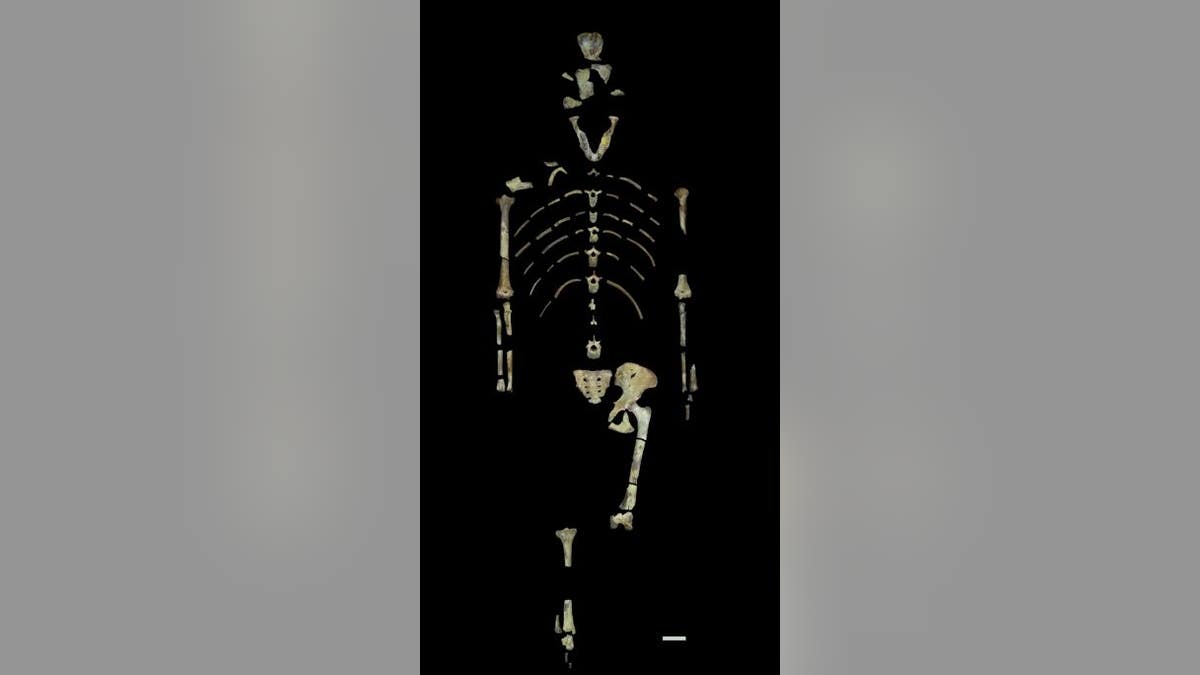
The fossils that make up the Lucy skeleton. (John Kappelman/University of Texas at Austin)
Lucy’s tree-climbing activities can be read in her bones, according to a new study that used computed tomography scans of her skeletal remains to learn more about her ancient behavior.
The human ancestor known as Lucy— technically a specimen of Australopithecus afarensis— lived over three million years ago. But in 2008, scientists at the University of Texas had the chance to scan her bones to figure out more about her.
The scientists focused on two arm bones and one leg bone, and eventually concluded that Lucy climbed in trees enough to make her upper body “heavily built,” according to a statement from Johns Hopkins University School of Medicine. In short: she climbed a lot in trees, and that made her strong.
“It is a well-established fact that the skeleton responds to loads during life, adding bone to resist high forces and subtracting bone when forces are reduced,” John Kappelman, a professor at the University of Texas at Austin and a coauthor on a new study in the journal PLOS ONE on Lucy’s bones, said in the statement.
48 BODIES UNEARTHED AT BLACK PLAGUE BURIAL SITE IN ENGLAND
The scientists compared the bones to other species, including chimpanzees (who are great climbers) and humans (who are not quite as good as chimps). Lucy’s bone structure proportions were in between the two.
“Our results show that the upper limbs of chimpanzees are relatively more heavily built because they use their arms for climbing, with the reverse seen in humans, who spend more time walking and have more heavily built lower limbs,” Christopher Ruff, a professor at the Johns Hopkins University School of Medicine, said in the statement. “The results for Lucy are convincing and intuitive.”
First discovered in 1974 in Ethiopia, the diminutive Lucy stood less than four feet tall, and she may have spent the night nesting in trees. A recent study in the journal Nature has suggested she might have even died following an arboreal accident.
“It may seem unique from our perspective that early hominins like Lucy combined walking on the ground on two legs with a significant amount of tree climbing,” Kappelman, who is also the first author on the Nature study, said in the statement, “but Lucy didn’t know she was ‘unique’ — she moved on the ground and climbed in trees, nesting and foraging there, until her life was likely cut short by a fall — probably out of a tree.”
Follow Rob Verger on Twitter: @robverger
